 Your new post is loading...
 Your new post is loading...
(Image via Tobias Fischer, Unsplash) Sedley Abercrombie writes: "A collection development plan sounds like a lot of work. It may seem as hopeless as squeezing water out of a rock. But a well-written collection development plan can be a very helpful advocacy tool that can help you garner more support than you might think. What keeps your administrator up at night? Is it test scores? Is it teacher retention? Is it supporting instruction? If you can answer that question, figure out how you can position the school library program to best support your school’s needs and you will be more likely to garner support for your program."
Lee Watanabe-Crockett writes: "Reading is more than just a pastime for your downtime. In fact, regular reading makes you healthier, and science proves it. According to the infographic below from GE Editing, there are 7 science-backed ways reading makes you healthier. The truth is, if you’re a regular reader, then both your brain and your body enjoy the benefits. It kind of makes you wonder why people don’t read more than they do. For instance, studies from organizations like Pew Research and Statistic Brain indicate that reading is on the decline, but this is in the U.S. alone. The chart below indicates how much reading is done globally in each country."
I seem to spend a lot of time curating resources for students and teachers, and I'll bet you do, too! I've used Diigo, Scoop.it and Symbaloo, but am growing very fond of elink. Some of the advantages I love: - It's visually appealing. Elink pulls an image from the website you're sharing, and if it doesn't, it's easy to quickly upload one.
- Unlike Symbaloo, Elink will pull a snippet of text from the website. You can edit, delete, add explanatory text, etc. I can guide students to specific parts of a website after they've explore the home page.
- It's FAST! Choose your template (there are a few free ones and several pro options,) start adding your links, rearrange the order, give your elink a name, and publish!
- I just heard from Raj at elink, and learned you can share Google Sheets, Forms, Docs, and YouTube videos without ads (they open on a black background and look beautiful, so I'll use it, even though some people like my daughter make their travel income from YouTube ads!)
I've used it in a variety of ways: The downsides: - Elink is a 13 and up site.
- There's currently no way to sign up with Google, which would be great for our students. Right now, they have to use another Gmail account, since our school accounts do not allow them to receive email from outside the district.
- They're touting their new product with a banner ad at the bottom of the elink page. It's large enough to be a distraction--at least to me, if not to students!
Gwyneth Jones writes: "Sometimes, when you're sharing the benefits of a professional Social Media presence, it can become a bit bewildering and overwhelming."
Ronnie Burt, Sue Waters and Kathleen Morris write: "Want your students to write more in your class? Looking for prompts or ideas for student blog posts? You are in luck! This post aims to get your creative juices flowing with over 100 ideas and examples..."
Melissa Stewart writes: "If you’re a longtime reader of Celebrate Science, you may remember that back in 2012 and 2013, I spent a lot of time trying to develop a Nonfiction Family Tree. This effort to categorize and understand the various kinds of nonfiction and the interplay among them was heavily influenced by the ideas of such nonfiction thought leaders as Marc Aronson, Myra Zarnowski, Sue Bartle, and Mary Ann Cappiello.
Eventually, I gave up on the family tree and started to think about other ways to classify nonfiction, but recently I decided to take a fresh look at the tree analogy, and I came up with something that I think is worth sharing..."
Lisa Von Drasek writes: "The Kerlan Collection at the University of Minnesota Archives and Special Collections is one of the leading repositories of rare books, process art, and manuscripts of children’s literature. The collections range from rare volumes of Mother Goose from the 1800s to contemporary creators like Jane Yolen, Sharon Creech, Christopher Paul Curtis, and Melissa Sweet. The University of Minnesota Libraries’ mission is to share these riches with teachers of children, youth services librarians, teachers of teachers, and students of creative writing and art, and anyone who is interested in the craft of making children’s books. I believe in the value of integrated art. Art observing and art making across the disciplines. This exhibit is a jumping off place, just the beginning of our explorations. Our team of volunteers, interns, and staff has created a resource describing children’s book art and how it is made with examples from over sixty artists that are held in the Kerlan Collection.
Angie Miller writes: "This is a busy time of year in schools–one that puts a great deal of pressure on our teachers. But let’s remember that as librarians, our very career is to serve others. We are the ultimate givers. And we can make this strained season in schools easier by offering up our services to the educators in our building. So how can you make the library a gift for our teachers? Here are some ideas..."
I had just taken these then and now photos when I read Sedley Abercrombie's article in Knowledge Quest. I was thrilled to look back at the changes we've made in our library over the past seven years. I wonder what it will look like seven years from now?
Nancy Frey and Douglas Fisher write: "It is popular in some quarters to restrict students' independent reading to a narrow band of (mostly) quantitative measures. But this restriction severely limits students' ability to build knowledge and investigate the physical, biological, and social worlds they occupy. These quantitative text measures are primarily calculated using algorithms based on the number of words, syllables, sentences, and rare words. What they can't report on are the qualitative values related to the complexity of the subject, as well as the reader's interests, motivation, and background knowledge. It takes a caring adult to expose students to texts that bring joy, spark questions, challenge assumptions, and deepen perspectives." (Emphasis added.)
From the Little Free Library website: We believe that books can inspire you to make the world a better place—starting in your own neighborhood! In a new twist on the traditional book club, Little Free Library’s Action Book Club™ invites participants to read books on timely topics, engage in lively discussions, and take part in meaningful—and fun—group service projects to benefit their communities. This is reading and social engagement at its best. When Action Book Club members share their experiences online, they help start a ripple effect of positive activity across the country and around the world. The Action Book Club’s current theme is Many Voices, which celebrates diversity, our differences, and the similarities that connect us all.
Gwyneth Jones writes: "Your Twitter profile is like a virtual business card. It's good for people to see who you are (not your cat or your cute kids) and what you’re all about. Use the opportunity of your profile picture and header photo accordingly. Sure, I've talked before about 6 Tips to a Super Twitter Profile but today, we're just talkin headers, hon!"
Jennifer Gonzalez writes: "A HyperDoc is a digital document—such as a Google Doc—where all components of a learning cycle have been pulled together into one central hub. Within a single document, students are provided with hyperlinks to all of the resources they need to complete that learning cycle."
|
Resources from Michelle's 89th Edweb.net webinar.
"One thing we (Amy Illingworth & Mari Venturino) have in common is our love of books! We both read a good mix of education, fiction, young adult, and nonfiction books. What better way to bring together teachers than with a Teacher Leadership Book Study? Our district did just that! Read on, for how we did it and what we learned, from the perspective of a teacher participant and an administrator facilitator."
Jennifer Gonzalez writes: "Whether you’re a teacher, an administrator, a librarian, a researcher—whatever you do, chances are you have information to share with other people, and developing your curation skills—both in terms of how much you offer and how you deliver it—is going make that sharing a lot more effective."
An easy-to-adapt digital breakout. I used it mainly to see how my 6th grade students constructed a search. Watching them work and analyzing the results on the Google Form gave me some insight into how I can help them become better researchers.
Polly-Alida Farrington writes: "Amit Agarwal of Digital Inspiration has created many handy tools and shares great tips on his blog. His TallTweets tool was originally created to create very long twitter posts. Enter your text and TallTweets parses it out into a bunch of connected tweets and posts them for you. Now that Twitter has added that feature, TallTweets has been repurposed to create gifs from Google slide decks."
Richard Byrne writes: "Creating book trailer videos is a great alternative to a traditional written book report assignment. In a book trailer video students highlight their favorite elements of a story and try to entice viewers to read the book themselves."
I love seeing a good challenge in a makerspace! Can you build a rocketship with three toothpicks and a whistle? Can you design a city that uses bicycles to provide power? How about some real world challenges, ones that our students really need to learn? Here are a few tongue in cheek challenges that I'd love my students to tackle! Our ASB students volunteered to make these videos with no script and lots of improvisation.
Laura Gardner writes: "School librarians wear many hats. In my school library, I teach information literacy; collaborate with teachers on technology-rich projects; offer book buffets and book talks on a regular basis; purchase, weed and manage a large collection; promote our library, books and reading on social media; and am in charge of a bustling Makerspace. I also try to find time to read widely from our collection, as well as new books I may wish to add to our collection. In the past, this reading has taken a back seat to other priorities, but in the last six months I have reprioritized to make more time for reading."
Connie Williams writes: "Librarians have been thinking long and hard about how to help redefine the “Bird Reports.” We help far too many students in the library locate information on subjects the student neither cares about nor really has an understanding of the scope of the topic, much less the task. Inquiry – that wonderful process of directing our work through the asking (and answering) of questions – is central to the process of redefining report writing into a task where students work from an initial place of wondering to an ending with a presentation (whether an essay, infographic, or media) of their claims and/or conclusions on a topic of their choice."
Donalyn Miller writes: "Restricting children’s reading choices to books that fit within their reading level warps children’s positive reading identity development and their perceptions of what reading is. Requiring students to read books “at their level” at all times limits children’s reading choices and derails intrinsic motivation to read, which is driven by interest, choice, and reader’s purpose—not reading level."
Sara Stevenson writes: "These English language learners are an integral part of our library program. Their ELL teacher sends them to the library frequently, and they are avid readers of graphic novels. Graphic novels are perfect for English language learners because they are high interest, and the images can fill in, giving clues when they don’t know a word. Rather than stopping to look up the meanings of every few words, they can intuit meaning."
Angie Miller writes: "The premise of a library lies at the intersection of truth and justice. It is the heart of the school where all are welcome and safe, where needs are met and potentials challenged."
|



 Your new post is loading...
Your new post is loading...






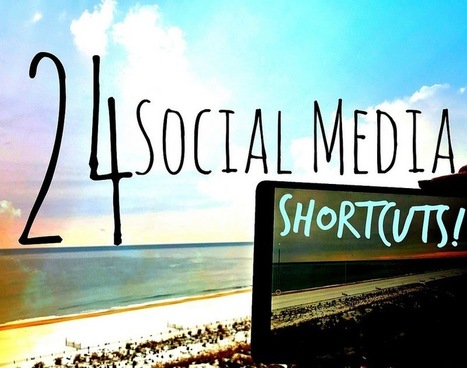
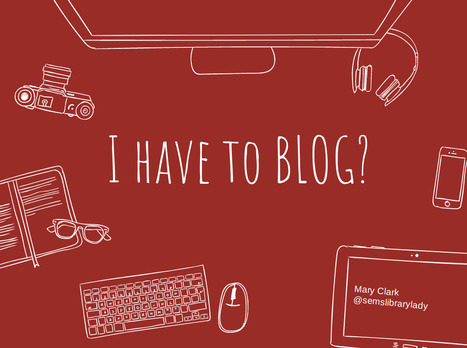









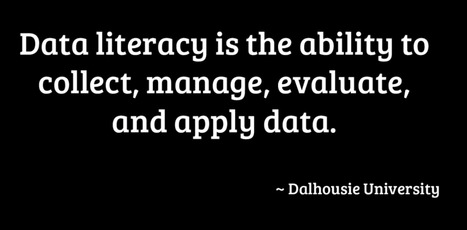



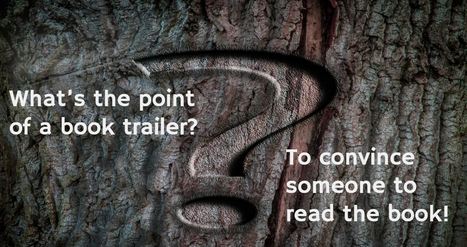









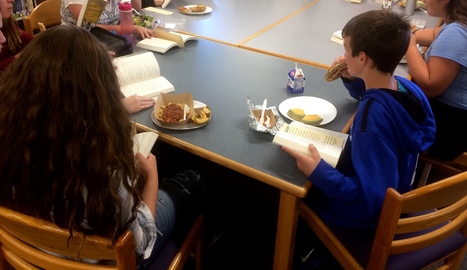





Sedley generously shared a template to make it as painless as possible to develop your own collection development plan. It's now on my list for my non-student work days at the end of June!